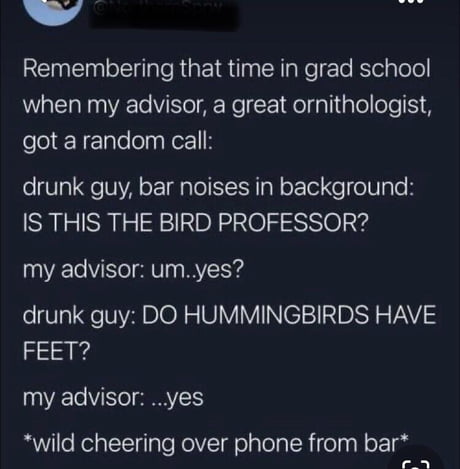
Our world of nature...
Bird babble, billboards, beat-boxing, bogus baby bats and more…
Once you’ve managed to say that headline three times quickly, read on for lots of interesting news from around the globe.
----------------------------------------------------------
Learning a new language on the fly
It may appear that the cacophony of birdsong marking the arrival of a predator is simple, panicked noise. Yet new research out of the University of Montana is showing it’s far more complex – and that these calls are not just of value to birds of the same species. While people may not understand, other birds and animals are aware of nuances within the calls.
According to this New York Times article the study is focused on “trying to understand this sort of ‘language’ of the forest.” The article looks into the work of Dr Erick Greene as he seeks to decode this language. It’s a massive task, particularly given that “one call lasts only a second or three, but can have up to a dozen syllables.”
The article has since been turned into a video as part of the ‘Science with Tom’ series. To help the NYT science section reach ‘fresher’ audiences Tom chooses an article each week to translate into a rap verse. For the article on Dr Greene’s work he’s accompanied by beatboxing – both human and bird.
----------------------------------------------------------
Phone it in
Although we don’t have the cutting-edge tech for bird communication like in the above article there are still tools available to help with bird discovery.
The Merlin Bird Id app aids this discovery by using photos, audio and an easy-use Q&A identification guide. While developed in the U.S this app is aiming to include NZ birds, with the New Zealand Bird Atlas working with Merlin. Now the call has gone out for Kiwis to record their local birds to help gain the minimum threshold number needed for the Merlin Sound ID machine learning. Find out more here about how you can help.
----------------------------------------------------------
We don’t know much about art (but we know what we like)
Earlier this year we reported on a series of billboards that also worked as homes for bees. Now, closer to home, there’s news of an Auckland mural that purifies the air.
The artwork uses a photocatalytic paint that absorbs air pollutants. It’s no small measure either – the mural provides the same positive impact as approximately 182 mature trees. Local artists Janine and Charles Williams created the work, named Te Karanga, as part of the Converse City Forests initiative, a global network of murals using the air purifying paint. We think it looks absolutely beautiful.

----------------------------------------------------------
Real news on fake (real) bat
When this incredible image of a baby albino fruit bat swept through the internet a couple of months it created a lot of fuss, mainly by those sharing with words like, “OMG IS THIS THE CUTEST THING YOU HAVE EVER SEEN I’M DYING OMGOMG LOL”. The more cynical (or knowledgeable) took it all with a grain of salt.

Now online fact-checkers Snopes have confirmed that, yes, this is not a real bat. At least, not in the living, breathing, inspiring-orphaned-millionaires-to-become-crime-fighting-superheroes sense. Click here to read the Snopes report (and to see more photos of the very cute creation).
----------------------------------------------------------
Someone just lost a bet…
So it turns out that people don’t always turn to Google or the nearest encyclopaedia when it comes to finding out facts or settling arguments. Sometimes it’s a matter of going straight to the source. Or, if you’re in a bar and have had a few, getting hold of the ‘bird professor’ to set things right…

----------------------------------------------------------
The soothing sight of birds in flight
Scrolling online we also came across this ‘Life Pro Tip’. We thought it was quite lovely, and worth sharing: “If caring for someone who is bedridden mount a bird feeder outside their window. It can provide calming entertainment. Take it to the next level and get them a bird book for that particular region.”
Read more from us

Sustainable Christmas gifts that will mean a lot
Unless you like driving around in circles looking for parking and playing cart dodge-ems in the crowds, shopping centres should probably be avoided at this time of year.

One swallow doesn’t make a summer…
Here are four bird-themed cocktail recipes you may want to try in the warm twilight hours ahead…

Seasonal Bounty: Asparagus
Delicious simply pan fried in butter or olive oil, the elegant asparagus also features as the star of many springtime recipes. Here are five of our latest favourites.

